A new study published in the journal Archaeology in Oceania has reopened a long-standing debate about when people migrated to Australia, suggesting a later arrival that overturns decades of archaeological evidence. The research, by archaeologists Jim Allen of La Trobe University and James O’Connell of the University of Utah, argues that Homo sapiens would not have reached Australia before 50,000 years ago — a stance taken largely in light of recent finds of ancient DNA.

The crux of Allen and O’Connell’s argument is that all modern non-African humans, including Indigenous Australians, carry Neanderthal DNA. Two new genetic studies have concluded that Neanderthals and modern humans only interbred once, somewhere between 50,500 and 43,500 years ago in Eurasia. Therefore, the researchers conclude that any human population that made it to Australia must have arrived sometime after this interbreeding event.
According to the researchers, evidence of early Sahul colonization is largely in line with this genetic timeline. Most known archaeological sites in Sahul indicate human presence between 43,000 and 54,000 years ago.
But this DNA model contradicts an archaeological report from the Madjedbebe rock shelter in northern Australia, where stone tools and ochre “crayons” were dated in 2017 to at least 65,000 years ago. That study is one of the most important contributions to the evidence for ancient people in Australia. However, the dating is questionable due to the sandy conditions of the site, which could have shifted older sediment layers over the years, making the artifacts appear older than they really are.

A number of experts remain skeptical of the new hypothesis, particularly its excessive reliance on genetic information. Others argue that data from neighboring Southeast Asia supports the possibility of an earlier migration into Sahul. For instance, rock art in Sulawesi, Indonesia, has been reliably dated back to at least 51,200 years ago. They suggest that those artists may have belonged to the same cultural group that originally colonized Sahul, perhaps as early as 65,000 years ago.
Another point of contention relates to the broader implication of the “Paleolithic Revolution” — a hypothesized burst of complex human behavior such as seafaring, tool making, and symbolic art that Allen and O’Connell believe occurred simultaneously with the dispersal of Homo sapiens from Africa roughly 50,000 years ago. This theory has also been subject to criticism, though.
Despite the robust genetic evidence for a more recent Australian arrival, the archaeological record — the most significant being the evidence from Madjedbebe — continues to raise doubts about a strict 50,000-year timeline. The inconsistency between the genetic and archaeological narratives has made it increasingly clear that neither line of evidence is yet definitive.
Ultimately, this new debate underscores the complexity of reconstructing human history. As researchers pursue both genetic and archaeological avenues, interdisciplinary collaboration will be essential to untangle the history of Australia’s first inhabitants.




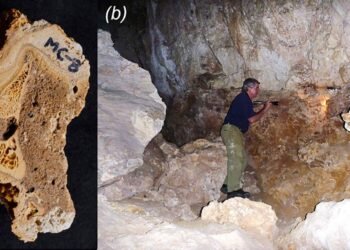
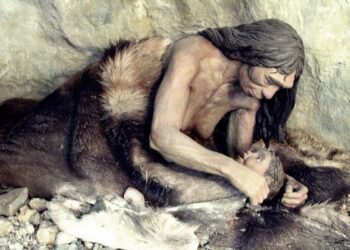
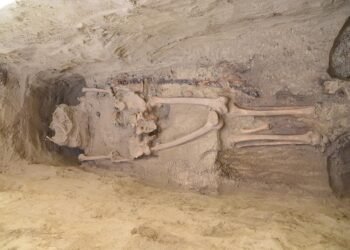
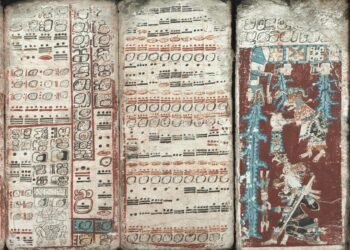
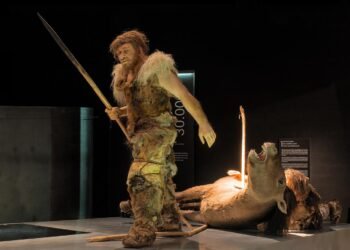













Could you give me information about the Popuan Pigmy’s?
I read some years ago that they were here in Australia when the aborigines came from India after the great floods.
I can no longer find this article.
Our politicians use historical lies to divide white Australians and aborigines and I would like to get evidence to shut these lies down.
Let’s be real, a human culture that claims to be the longest living humans(Australian aborigines) must have been able to invent the wheel(arrest).
The aborigines didn’t!
The built nothing, and for this reason I can not believe they were the first.
Modern scientific evidence, including genetic studies, confirms that Aboriginal Australians are all genetically related and are descended from the first humans to arrive on the continent, between 55,000 or more years ago. There is no evidence to suggest that any distinct pygmy population ever existed in Australia or any evidence to suggest a discrete or separate genetic lineage has ever existed in Australia either.
The earliest evidence of the wheel dates back to 4200-4000 BCE primarily used for pottery. Wheeled vehicles appeared later, around 3500-3350 BCE.and as Australia had no draft animals there was no need for the wheel . The Incan empire never used the wheel either.
As for building nothing; the Aboriginal people had their own inventions.But like all good inventions, these were simple, elegant solutions, and made from materials close at hand. Many of these inventions reveal a deep understanding of science and medicine.
The angled shape of the returning boomerang with asymmetrical curves makes use of one of the most complicated principles of aerodynamics: asymmetrical lift.Other cultures may have had throwing sticks but the boomerang was a totally Australian invention.
Aboriginal people also made a powerful thermoplastic resin from porcupine grass and grass trees that was used in the creation of tools.
The Aboriginal people also demonstrated a sophisticated understanding of engineering, physics and aquaculture in the design of elaborate stone fish traps in NSW, and the 100 sq.km eel farm at Lake Condah in Victoria. Some of Australia’s Aboriginal fish traps are thought to be up to 40,000 years old. They may be some of the oldest surviving human-made structures in the world.
Bush medicines were also created by the Aboriginal people. They used tannins to treat inflammation and alkaloids to relieve pain; extracted antiseptics such as tea tree oil to cure infections; and harvested latex to treat ulcers and skin conditions.Some of these medicines are still used today with modern treatments.
The Aboriginal people had a culture that Europeans did not comprehend so they chose to ignore it and many do so even now.
Great response, Alan. Thanks for providing this informative comment.
Technology development in isolated regions of the world is not a good predictor of when settlement and cultural development began. For example, even far more advanced civilisations had unbelievable mixes of advancement and deficits in many respects. E.g., the greatest pyramids in Egypt were built long before (I think, at least 1000 to 1500 years before) the arrival of the spoked wheel (for war chariots), tamed horses themselves, metals such as bronze (probably), and definitely before iron. Those things came with Steppe invaders (from the Ukrainian & Southern Russian area between the Black Sea and the Caspian Sea), as well as more neighbouring regions, like places corresponding to modern-day Iraq, Turkey, and even Southern Europe’s “Sea Peoples.” ** Similarly, the Spanish colonisers in the 1400s and 1500s found amazing contradictions, such as kingdoms and empires from North America (esp. “Aztects” in Mexico), and going south, through Maya territories and those of many other nations –all the way south from thousands of kilometres of Inca stone roads from Peru, and various surrounding Amazon-area number of countries, all the way down to near-Antarctic, southernmost Argentina and Chile, where they had stone temples, including step pyramids, organised colonialism, taxing and exploitation, etc. And yet, no wheel, nor metal tools and weapons, etc (and elegant poetry — yet, just hand-shaped because they didn’t have the potter’s wheel, which was used in West Asia and the Near East as far back as 8,000~10,000 years ago.